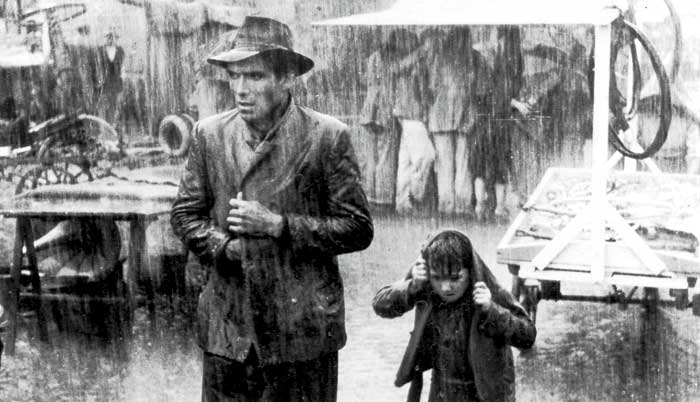Each month, the Indie Prof reviews a current film in the theater and a second film that is available on DVD or an instant-streaming service. Follow “Indie Prof” on Facebook for updates about film events and more reviews.
Mother of George (2013)

Scene from “Mother of George”
This beautiful, sensuous film is the second feature from director Andrew Dosunmu, a Nigerian photographer and filmmaker who got his start in music videos. His first feature film, Restless City (2011), premiered at Sundance. This second feature, Mother of George, also premiered at Sundance, and it shows not only exponential growth as a filmmaker but also the promise of a future master filmmaker.
The film opens on the wedding of Nigerian couple Ayodele and Adenike, now living in Brooklyn. The cinematography is stunning: lush colors, stunning close-ups, and lingering shots that allow us to enjoy the moment and meet the characters. Few films can open so powerfully and enigmatically, at once telling us everything without saying very much at all. We feel the love, the intimacy, and the cultural depth of the ceremony while also feeling the weight of expectation and tradition that will bear down on them—most of it resting with the bride, Adenike. The groom’s mother tells Adenike that she will bear a son, and that son will be named George.
Months go by, however, and Adenike does not get pregnant. She tries tribal remedies, but nothing seems to work. The couple gets frustrated, the groom’s mother increases the pressure on them, and Adenike finally visits a fertility doctor—against the wishes of her husband and his mother; Ayodele’s manhood is called into question, and he will not participate. Finally, it is Ayodele’s mother who comes up with a shocking proposal to settle the issue, and I will say no more about the plot.
While that plot is interesting and the actors inhabit their roles with ferocity and emotion, it is the way the plot is visualized that invigorates the screen. The aforementioned cinematography of the opening sequence remains the star of the film; most of the time the film is in a soft focus that keeps only a part of the scene in focus—a face, a hand, legs—while the remainder of the screen remains just a bit blurry. The result is a mesmerizing intimacy from which we cannot turn away. It starts November 8 at either the Esquire, the Mayan, or the Chez Artiste Theater. Check the listings.
You will like this film if you enjoyed Upstream Color and War Witch.
Bicycle Thieves (1948)

Scene from Bicycle Thieves
You may know this classic Italian film by another name—The Bicycle Thief. The original Italian title of the film, Ladri di Biciclette, is literally translated as Bicycle Thieves (the plural form). But when the film was released in the United States, the translation was The Bicycle Thief. Why the change? I don’t think it was a simple mis-translation; rather, I believe it was an attempt to define a very non-Hollywood film as a Hollywood film. The title was changed back to its original for a recent release of the Criterion Collection DVD. It can now rest in peace.
The Italian cinema of the 1930s under Mussolini was not very dynamic—the majority of the films were period pieces, light comedies, or romantic comedies. All that changed after WWII. Filmmakers, now freed of the restrictive policies of Fascism, developed a new type of cinema, called Neorealism, that told the stories of everyday Italians—the poor, the disenfranchised, the struggling masses in the wake of the War. The films were usually simple stories with a great deal of social commentary, and cinematography that highlighted the people in relation to their surroundings.
The story is about a man who gets a job and needs his bike for that job. His bike is stolen on his first day of work, and he is left to wander the city with his son trying to find it. He enlists help from the local union, but they fail. The police cannot be bothered with “just a bicycle.” When he spots an accomplice of the thief, the accomplice takes refuge in a shelter and eventually gets away. He finally does find the actual thief, but satisfaction is elusive in this society. I won’t tell you how it ends.
The film is not only one of the great films of all time, but it is also one of the most influential. Many future directors would be directly impacted by the film, for example, Martin Scorsese and Francis Ford Coppola. The film is noteworthy for its honest portrayal of people dealing with difficult circumstances and indifferent institutions. The realism is heart-wrenching, pure, and unsentimental.
You will like this film if you enjoyed A Better Life and A Separation.
This film, along with all other films I’ve reviewed, can be found at the Sam Gary Library. Look for the Indie Prof display at the end of the DVD racks. You can also find this film under the Criterion Collection on Hulu Plus.
Vincent Piturro, PhD, teaches Cinema Studies at Metropolitan State University of Denver. He can be reached at vpiturro@msudenver.edu.




0 Comments